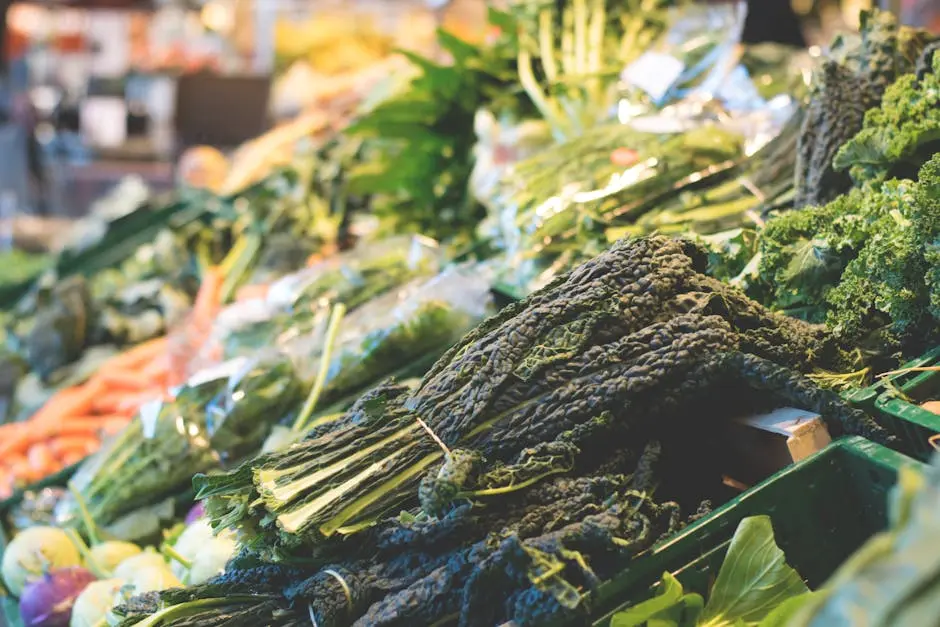In today’s world, where food quality can be a concern, understanding the benefits of local sourcing is essential. This article explores how sourcing food from local producers can enhance the freshness, taste, and nutritional value of the food we consume.
Step 1: Understanding Local Sourcing
Local sourcing refers to obtaining food from nearby farms or providers. This practice reduces the distance food travels, ensuring greater freshness and quality.
When you hear someone mention local sourcing, think of it as a simple concept but with profound effects. It’s about connecting the consumer directly with their food sources. By sourcing from local producers, we create a community around food, link with our local farmers, and help to ensure that what we consume is both fresh and flavorful.
Step 2: Evaluating Freshness
One of the biggest advantages of local sourcing is the freshness of the produce. Foods that are harvested and sold within a short distance taste better and retain more nutrients.
Imagine biting into a tomato that was picked just hours ago. That burst of flavor and juiciness is a prime example of why freshness matters. Locally sourced produce doesn’t have to endure long transport times, meaning it reaches you in peak condition. This not only enhances the eating experience but also ensures higher nutritional content, as more vitamins and minerals are preserved compared to those that are shipped across the country.
Moreover, local sourcing often means you can find seasonal produce that’s meant to be eaten right away. Did you know that certain fruits and vegetables have specific peak seasons? Consuming them at their best ensures you get the optimum taste and health benefits.
Step 3: Supporting Local Economies
Buying food locally helps support local farmers and businesses. This strengthens the community and contributes to the local economy.
Every time you purchase locally sourced food, you’re making a conscious decision that benefits not just yourself, but everyone around you. Supporting local producers keeps money within the community, empowering small businesses to thrive. This localized spending encourages jobs and fosters a sense of community pride.
Furthermore, when we buy local, we cultivate relationships with those who grow our food. Knowing your farmer can create a trust that is often absent in larger commercial supply chains.
Step 4: Reducing Environmental Impact
Local sourcing significantly reduces carbon footprints by minimizing transportation. This eco-friendly choice benefits the environment while providing quality food.
When food travels long distances, it contributes to increased greenhouse gas emissions through transportation. By choosing local sources, we are making an impactful decision to decrease our overall environmental toll. These sustainable practices not only help in reducing pollution but also promote biodiversity—encouraging a wider variety of crops cultivated in local regions.
Thus, supporting local sourcing can be a delightful and effective way to combat climate change, one meal at a time.
Step 5: Exploring Varieties and Flavors
Local farmers often grow unique varieties that are better suited to the climate. These options can lead to more flavorful and diverse meals.
When you shop locally, you might stumble upon unique heirloom varieties that aren’t typically available in big-box stores. These local products offer tastes that are distinctly different and can add a delightful twist to your meals. Isn’t it exciting to know that the foods you enjoy can also support the preservation of local agricultural heritage?
Additionally, the connection with local producers often means that you’re privy to the stories behind the food on your plate. Farmers who are passionate about what they do frequently share their favorite recipes and tips, enriching your food experience further.
The Impact of Local Sourcing on Food Quality
By choosing locally sourced foods, consumers can enjoy not only better quality but also support their community and promote sustainable practices. Making the effort to find food near me can lead to richer flavors and healthier options for everyone.

